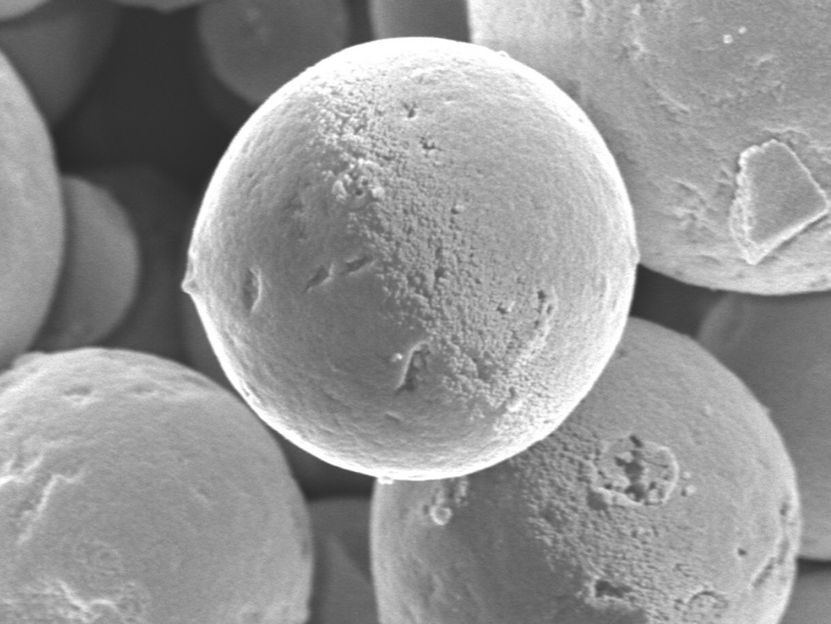Microswimmers move like moths to the light
Impressive behavior of synthetic microswimmers studied
The Freigeist group at TU Dresden, led by chemist Dr Juliane Simmchen, has studied an impressive behavior of synthetic microswimmers: as soon as the photocatalytic particles leave an illuminated zone, they flip independently and swim back into the light. This promising observation and its analysis was recently published in the scientific journal “Soft Matter” as an "Emerging Investigator" article.

Janus particles under the electron microscope. The titanium dioxide microswimmers are barely larger than one micrometer.
Copyright: Simmchen Group
TU Dresden Freigeist fellow Dr Juliane Simmchen is investigating with her multidisciplinary junior research group the motion of synthetic microswimmers in liquids. Her goal is to enable these inanimate microparticles to move in a certain direction of their own accord and thus, in future, to be used in sensor technology or biological cleaning. "Actually, it's a bit like playing computer games in the laboratory," the chemist describes her extraordinary research work in an interview with the Volkswagen Foundation.
The Simmchen group is working with the so-called "Janus particles". These consist of a body of titanium dioxide with two differently coated sides: one side with a catalytically active layer of nickel and gold, the other side remains untreated. Titanium dioxide is used as a whitening agent, for example in wall paint, but it also reacts with light. As a result, Janus particles are photocatalytic, which means that as soon as light hits them, chemical reactions occur that set off a movement.
The group has now observed and analyzed an extremely unusual phenomenon in the motion of Janus particles: as soon as the particles leave an illuminated zone in the microscope, they turn around by themselves and swim back - a behavior that is actually only known from microorganisms. But how can such complex behavior be triggered in synthetic microswimmers?
First author Lukas Niese and Dr Simmchen were able to show that as long as the particles are active in the light, their swimming direction is stabilized by a combination of physicochemical effects. As soon as the particles are no longer exposed to light, there is no energy conversion and the direction of movement is no longer stable. "In this case," explains Lukas Niese, "the natural thermal movement (Brownian Motion) sets in. This causes the particles to virtually flip, and then they swim back into the exposed area.”
"The fact that such simple effects as the Brownian Motion can lead to such complex behavior was quite astonishing and impressive, especially in terms of the evolution and the development of abilities. We could make use of this property for the targeted control of microrobots. Applications are conceivable in which the particles filter and remove pollutants from liquids or transport medicine through the body, and perhaps even transport information," says Dr Simmchen, explaining the significance of the discovery.
Original publication
Other news from the department science

Get the chemical industry in your inbox
By submitting this form you agree that LUMITOS AG will send you the newsletter(s) selected above by email. Your data will not be passed on to third parties. Your data will be stored and processed in accordance with our data protection regulations. LUMITOS may contact you by email for the purpose of advertising or market and opinion surveys. You can revoke your consent at any time without giving reasons to LUMITOS AG, Ernst-Augustin-Str. 2, 12489 Berlin, Germany or by e-mail at revoke@lumitos.com with effect for the future. In addition, each email contains a link to unsubscribe from the corresponding newsletter.



























































